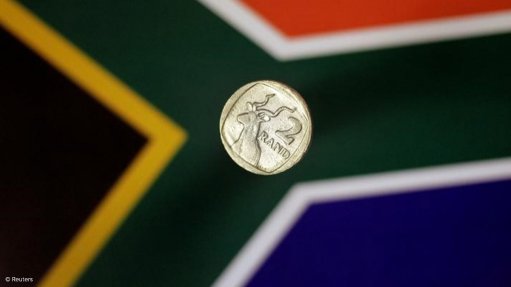While Rome burns
In 2019, commercial aviation used 90-billion US gallons of jet fuel, which is basically paraffin. This is 374 755 766 616 𝓵 which, in Africa, is impela enkulu.
In November 2012, I wrote the following: “Okay, all you bright people, what do paraffin lamps and US passenger jet engines have in common? Okay, they both produce carbon dioxide (which is supposed to cause global warming). Anything else? Well, we can be almost sure that (unless you are the cool arty type) if you use paraffin lamps at night, you have not been on a passenger jet. What do the two have in common? Give up? Simply this: paraffin lamps are widely used for lighting in rural areas of Africa and Asia, where electricity is not distributed, or is too costly. Paraffin lamps consume an estimated 77-billion litres of fuel each year, equivalent to 1.3-million barrels of oil a day, comparable to yearly US jet fuel consumption of billions of litres a year. Isn’t that wow? But here is the kicker: you can’t replace a passenger jet engine with a solar panel. But you can replace a paraffin lamp with a solar panel.
“So I decided to start up my own nonprofit power company, which is known as African Water Power and Light (Awpal). The purpose of Awpal is to provide rural communities with solar-powered water pumps and solar panel lights. It is funded by me (and, hopefully, someday, others, hopefully) and we give solar-powered lights and solar-powered water pumps to rural people. We first test the products by leaving them in the rain, cycling the batteries, letting the pumps run dry and so on so that we can be sure the equipment works. We then give a few samples to test communities and then give them some more lights and pumps if it all works out.”
Okay, so it is now eight years later. We (that is, me) have distributed about 3 000 solar lamps to schools and communities in northern Zambia, southern Zambia, KwaZulu-Natal, the Republic of Congo and Kenya. All the recipients are really happy with the lights. The lights we distributed are made by Unite to Lite (in the US) and Consul in South Africa. The benefits of the lights are reduced use of paraffin, increased income and a safe light. Now has come onto the scene a further light: a saltwater-powered light. This uses a magnesium air-battery and saltwater to produce light. It can run for 80 hours before the magnesium electrode is used up and has to be replaced. All these products can greatly improve the lives of rural people. One would think that the benefits of (a) giving light to the poor, (b) giving additional income by not making them pay for electricity, (c) giving them a light which reduces the use of paraffin and thus global warming, would be a no-brainer for any government. Any government which dishes these out will get way more support than any amount of T-shirts and caps will achieve.
I thought that, with my Awpal company, I would effectively show governments the way and, like a bushfire, the poor would get uplifted in a big way. But it hasn’t happened. The epidemic has, I think, shown that commercial aviation, more than anything, causes atmospheric warming (with 189 000 flights a day, 68.9-billion a year in 2019) and there have been immediate signs of improvements since the epidemic started.
So, why not cut emissions from paraffin lamps in Africa? The stark truth is this: most African governments do not want to help the poor. The moment they are elected, they just want to help themselves, to do as little work for as much money as possible. It makes no difference to them that, in Africa, 140 years after the incandescent light bulb replaced the paraffin lamp in the US, rural Africa is still using the paraffin lamp. It’s monumentally unfair. African politicians should be ashamed.
Comments
Press Office
Announcements
What's On
Subscribe to improve your user experience...
Option 1 (equivalent of R125 a month):
Receive a weekly copy of Creamer Media's Engineering News & Mining Weekly magazine
(print copy for those in South Africa and e-magazine for those outside of South Africa)
Receive daily email newsletters
Access to full search results
Access archive of magazine back copies
Access to Projects in Progress
Access to ONE Research Report of your choice in PDF format
Option 2 (equivalent of R375 a month):
All benefits from Option 1
PLUS
Access to Creamer Media's Research Channel Africa for ALL Research Reports, in PDF format, on various industrial and mining sectors
including Electricity; Water; Energy Transition; Hydrogen; Roads, Rail and Ports; Coal; Gold; Platinum; Battery Metals; etc.
Already a subscriber?
Forgotten your password?
Receive weekly copy of Creamer Media's Engineering News & Mining Weekly magazine (print copy for those in South Africa and e-magazine for those outside of South Africa)
➕
Recieve daily email newsletters
➕
Access to full search results
➕
Access archive of magazine back copies
➕
Access to Projects in Progress
➕
Access to ONE Research Report of your choice in PDF format
RESEARCH CHANNEL AFRICA
R4500 (equivalent of R375 a month)
SUBSCRIBEAll benefits from Option 1
➕
Access to Creamer Media's Research Channel Africa for ALL Research Reports on various industrial and mining sectors, in PDF format, including on:
Electricity
➕
Water
➕
Energy Transition
➕
Hydrogen
➕
Roads, Rail and Ports
➕
Coal
➕
Gold
➕
Platinum
➕
Battery Metals
➕
etc.
Receive all benefits from Option 1 or Option 2 delivered to numerous people at your company
➕
Multiple User names and Passwords for simultaneous log-ins
➕
Intranet integration access to all in your organisation

















